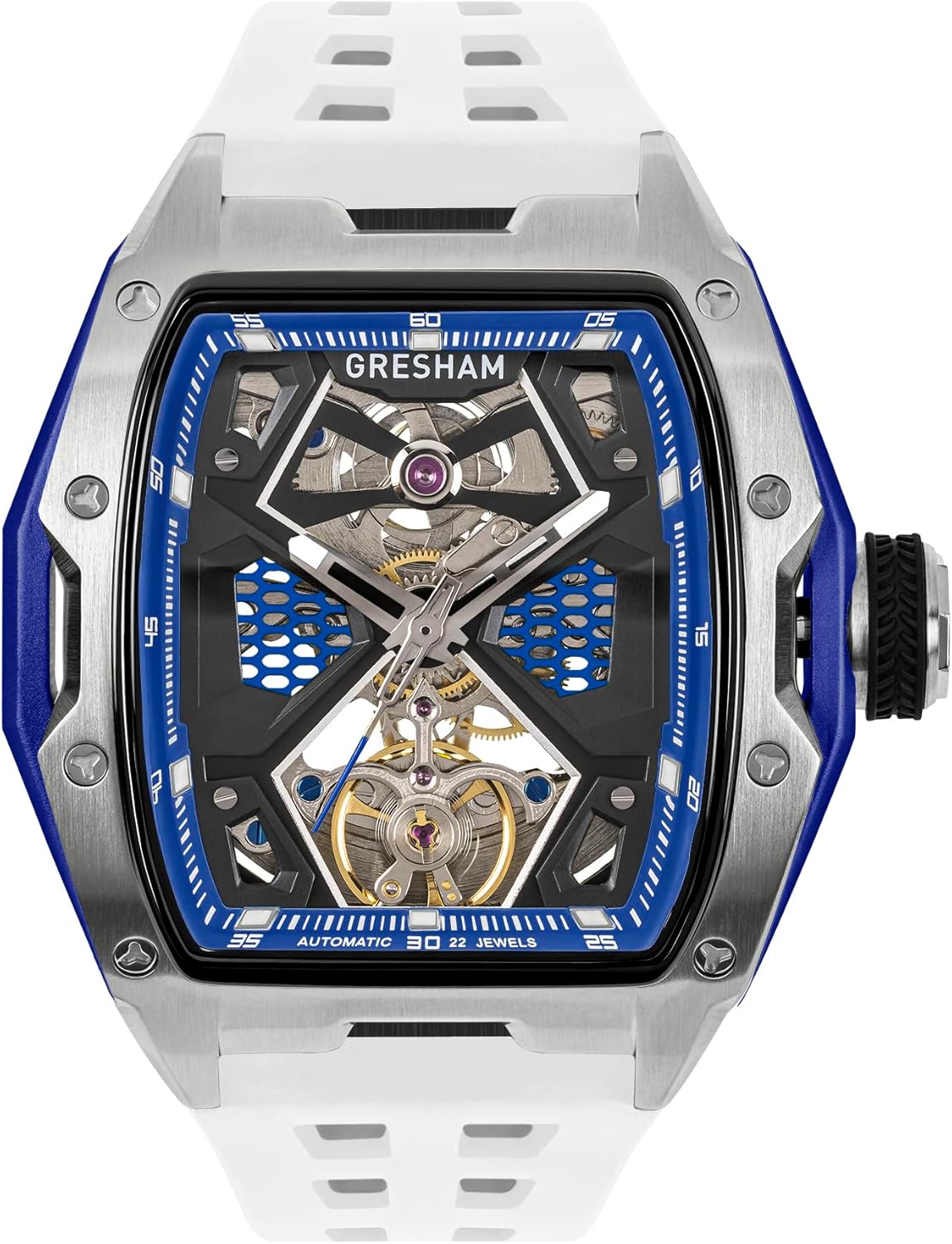About this deal
Gresham introduces the latest in cutting edge watch design and construction, fusing architectural elegance with the intricacy of traditional watch making. The following paper is a helpful summary of Wren’s mathematical work which gives detail of the original sources, for example the places in Wallis’s Tractatus de Cycloide where he explain’s Wren’s rectification of the cycloid and solution to Kepler’s problem. Wren the Mathematician, D.T. Whiteside, Notes & Records of the Royal Society, 15, pp107-111 (1960). We remember Christopher Wren as a great architect. But he was so much more. Today I’m going to tell you about Christopher Wren the mathematician. We’ll look at his work on curves including spirals and ellipses, and we’ll see some of the mathematics behind his most impressive architectural achievement – the dome of St Paul’s Cathedral. We’ve got a huge range of 100% genuine luxury watches from leading brands such as Rolex, Tag Heuer, Omega and Breitling, all individually assessed and valued by our expert buyers.
If you’d like to read more about Wren’s life, two very good places to start are Lisa Jardine’s 2002 biography On a Grander Scale, and Adrian Tinniswood’s 2001 biography His Invention so Fertile. When buying a luxury watch, the brand is a key factor. Whether you're a loyal collector or looking for fashion-forward, we have a wide range of designer watches from leading brands such as Rolex, Tag Heuer, Omega and Breitling. All of our watches are individually assessed and valued by our expert buyers to ensure pristine quality. Shop by Watch Movement Markhor Screw-horned Goat, by Rufus46, Boreray Ram, by Gibbja, Giant Eland by Greg Hume, all CC BY-SA 3.0, via Wikimedia Commons The story of the y = x 3approximation to the perfect masonry dome, and a derivation of the correct equation, is given in Hooke's Cubico-Parabolical Conoid, by Jacques Heyman, in Notes and Records of the Royal Society of London, Vol. 52, No. 1 (Jan., 1998), pp. 39-50 https://www.jstor.org/stable/532075. Wren was educated at Oxford and later held the Savilian chair in astronomy there, as well as his Gresham professorship in London. These roles and others place him right at the heart of an exceptionally active and exciting community of scientific thinkers. The group around Gresham College included not just Wren as Gresham Professor of Astronomy but also Robert Hooke, who was Gresham Professor of Geometry at a similar time. Wren was not just a founder member of the Royal Society (which arose out of weekly meetings at Gresham beginning in November 1660) but served as its president. And he was an active contributor in meetings – if perhaps not in subscription fees, which he had to be chased to pay up. In short, he was a key contributor to the scientific and mathematical thought of the time. We can see this, not just from his own work, but by the amount he is mentioned in the writing of others, giving credit to him for certain ideas. For example, when Isaac Newton introduces the idea of a force governed by an inverse square law in his Principia Mathematica, he says that one example is the force governing the motion of the planets “as Sir Christopher Wren, Dr. Hooke, and Dr. Halley have severally observed”. Wren’s name appears seven times in the Principia. In fact, the leading architectural historian John Summerson (1904-1992) wrote that if Wren had died at thirty, he would still have been a “figure of some importance in English scientific thought, but without the word “architecture” occurring once in his biographies”. Wren’s contributions to astronomy are the subject of a lecture by the current Gresham Professor of Astronomy, Katherine Blundell, which you can watch online: today I want to explore his mathematical contributions.Yet it seems indisputable that 'Victorian' has come to stand for a particular set of values, perceptions and experiences. On the other hand, historians are deeply divided about what these were. Certainly as G. M. Trevelyan remarked half a century ago, referring obliquely to Lytton Strachey's debunking of these values: 'The period of reaction against the nineteenth century is over; the era of dispassionate historical valuation of it has begun.' And, he added, perhaps as a warning: 'the ideas and beliefs of the Victorian era...were various and mutually contradictory, and cannot be brought together under one or two glib generalizations'.
At the beginning of the nineteenth century, communication was slow, even relatively short journeys were uncertain and time-consuming, and people were dependant on the forces of nature for energy; this lecture charts the development of new modes of communication, from the railway to the radio, the telegraph to the telephone, the steamship to the motor-car and examines their efforts on perceptions of time and space. Within major cities, tram systems, and suburban and underground railways began to speed up traffic, just as the main roads were becoming clogged with horse-drawn cabs and carriages, automobiles and omnibuses. In 1863 the world's first underground railway, the Metropolitan, opened in London, and was soon extended, but steam locomotives posed many problems, and the cut-and-cover method of construction soon ran out of roads that could be dug up, and London turned to boring deeper lines for 'tube' trains powered by electricity, the first of which was opened in 1890. Above ground, the electric tramway system devised by Werner von Siemens began running in Berlin in 1879, and soon spread to many other countries. There’s an excellent article by Tony Philips on the mathematics of shells at http://www.ams.org/publicoutreach/feature-column/fcarc-shell1. I created my designs in Geogebra3D, using a modified version of the general solid logarithmic spiral equation discussed in the article. Have a designer watch you want to sell? Or, have your eyes on a particular brand and want to part exchange? Ramsdens is happy to help. Learn More About Watches
The three conics, by Pbroks13, CC BY 3.0, via Wikimedia Commons https://commons.wikimedia.org/wiki/File:Conic_sections_with_plane.svg The portrait of Christopher Wren is from the National Portrait Gallery https://www.npg.org.uk/collections/search/portrait/mw06939/Sir-Christopher-Wren
 Great Deal
Great Deal 